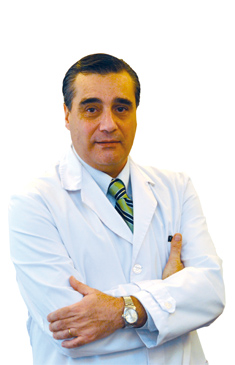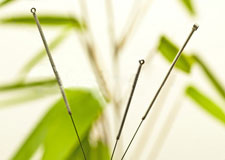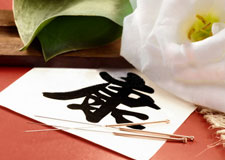The mechanisms of action of acupuncture are not fully defined, but today, especially since this technique has been practiced and developed in the West, already studied data from the Western scientific view, explain why certain effects after insertion of the needle.
From the beginning, the effect of acupuncture on pain has been what has attracted most Western scientists. For this reason, are the anatomical and physiological mechanisms of acupuncture on the pain the best studied, and still no definitive conclusions serve to support a scientific base that removes the aura of empiricism which so far had.
The therapeutic effect in the treatment of pain should be approached through two prisms. On the one hand, the analgesic effect itself, based on the secretion of endogenous analgesic substances and other anti-inflammatory effect, which involves the resolution of the inflammatory process and pain factor precursor.
In 1973, Anderson found that in patients who had been a painful stimulus applied on the dental pulp to be treated with electro-acupuncture (EA) there was an effect of raising the pain threshold.
Mayer, in 1977, gives as a possible mediation of acupuncture analgesia release of endogenous opioids. In patients who had been led to painful stimuli at the level of the dental pulp were subjected to treatment with (EA), showing a higher threshold of pain, as he had found Anderson. After these patients were given an endorphin antagonist, naloxone, noting that the analgesic effect disappeared, thus ruling out a placebo effect or hypnotic in the acupuncture treatment.
This formed the suspicion that the influence of endogenous opioids in the mechanism of action of acupuncture analgesia is confirmed by treatment with EA low frequency in patients with recurrent pain increases the levels of b-endorphin in the cerebrospinal fluid.
However if there has been an increase in meta-enkephalin in cerebrospinal fluid and plasma of patients addicted to heroin, treated with EA, in turn experienced a relief in symptoms of detoxification therapy. Today it is known that in addition to the analgesic Hashimoto, in 1977, and showed an increase in neutrophils between 23 and 57% at two hours of the application of acupuncture on some specific points
In experimental leukopenia, Pam Rogers noted the increase of leukocytes after treatment with acupuncture.
In 1987, Zhoa Cuiying observed an increase of T and B lymphocytes in immune insufficient mice treated with acupuncture and moxibustion (application of local heat on the points), noting that this phenomenon did not occur in healthy mice.
At the level of bone metabolism, studies in the Surgery Branch of the Veterinary School of Zaragoza, led by prof. Bonafonte show that the application of electroacupuncture in the treatment of experimental fractures in rabbits, maintained from the start of treatment, the optimal serum levels of calcium and phosphorus in 2:1. Today we know that this index is appropriate for a good ossification. This situation is not observed in spontaneous bone healing.
This same research group, led by prof. Bonafonte, has observed the histological changes that occur at the level of callus, when this experimental fracture has been treated with electroacupuncture, presenting a lineup similar to the physiological in the trabeculae of the callus, which is not true in the case of spontaneous ossification where new trabeculae are distributed anarchic.
From the beginning, the effect of acupuncture on pain has been what has attracted most Western scientists. For this reason, are the anatomical and physiological mechanisms of acupuncture on the pain the best studied, and still no definitive conclusions serve to support a scientific base that removes the aura of empiricism which so far had.
The therapeutic effect in the treatment of pain should be approached through two prisms. On the one hand, the analgesic effect itself, based on the secretion of endogenous analgesic substances and other anti-inflammatory effect, which involves the resolution of the inflammatory process and pain factor precursor.
In 1973, Anderson found that in patients who had been a painful stimulus applied on the dental pulp to be treated with electro-acupuncture (EA) there was an effect of raising the pain threshold.
Mayer, in 1977, gives as a possible mediation of acupuncture analgesia release of endogenous opioids. In patients who had been led to painful stimuli at the level of the dental pulp were subjected to treatment with (EA), showing a higher threshold of pain, as he had found Anderson. After these patients were given an endorphin antagonist, naloxone, noting that the analgesic effect disappeared, thus ruling out a placebo effect or hypnotic in the acupuncture treatment.
This formed the suspicion that the influence of endogenous opioids in the mechanism of action of acupuncture analgesia is confirmed by treatment with EA low frequency in patients with recurrent pain increases the levels of b-endorphin in the cerebrospinal fluid.
However if there has been an increase in meta-enkephalin in cerebrospinal fluid and plasma of patients addicted to heroin, treated with EA, in turn experienced a relief in symptoms of detoxification therapy. Today it is known that in addition to the analgesic Hashimoto, in 1977, and showed an increase in neutrophils between 23 and 57% at two hours of the application of acupuncture on some specific points
In experimental leukopenia, Pam Rogers noted the increase of leukocytes after treatment with acupuncture.
In 1987, Zhoa Cuiying observed an increase of T and B lymphocytes in immune insufficient mice treated with acupuncture and moxibustion (application of local heat on the points), noting that this phenomenon did not occur in healthy mice.
At the level of bone metabolism, studies in the Surgery Branch of the Veterinary School of Zaragoza, led by prof. Bonafonte show that the application of electroacupuncture in the treatment of experimental fractures in rabbits, maintained from the start of treatment, the optimal serum levels of calcium and phosphorus in 2:1. Today we know that this index is appropriate for a good ossification. This situation is not observed in spontaneous bone healing.
This same research group, led by prof. Bonafonte, has observed the histological changes that occur at the level of callus, when this experimental fracture has been treated with electroacupuncture, presenting a lineup similar to the physiological in the trabeculae of the callus, which is not true in the case of spontaneous ossification where new trabeculae are distributed anarchic.





